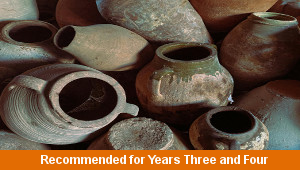Lesson One – Counting Groups

This maths teaching pack for Key Stage Two gets the children to use concrete objects and diagrams to identify and model how to add equal groups when multiplying different pairs of numbers.
The class can produce and use example cube towers to supporting counting in different steps when multiplying a pair of numbers linked to a multiplication times table.
Download this teaching pack including a lesson plan, classroom activities and an interactive presentation to teach the children to use concrete objects and diagrams to identify and model how to add equal groups when multiplying different pairs of numbers
Activities in this teaching pack include a set of differentiated worksheets to identify and model how to use pictorial diagrams and calculations to match a range of different number facts in the times tables.
The interactive presentation gets the children to identify and explain how to count in equal groups to solve problems for a range of multiplication calculations when using concrete objects to find the matching products.
This lesson is part of a maths scheme of work to get the children to model and illustrate how to use facts in the times tables to multiply different numbers by two and five by counting and grouping matching products. There are teaching activities for shared learning, differentiated worksheets to support independent learning and interactive presentations to introduce concepts and key skills.
-

Theme Park Visit
Practise identifying and calculating the timing and duration of rides and events when visiting a theme park on a special family trip
-

Number Thousands
Compare, order and sequence different sets of four digits numbers by using the place value of their numerical digits including counting in steps of thousands
-

Lengths, Masses and Capacities
Solve a selection of contextual problems by comparing and converting between different units of measurement for mass, length and capacity
-

Ancient History Finds
Explore and illustrate how to use apostrophes for possession to indicate some of the special artefacts that were owned and used in past civilizations
